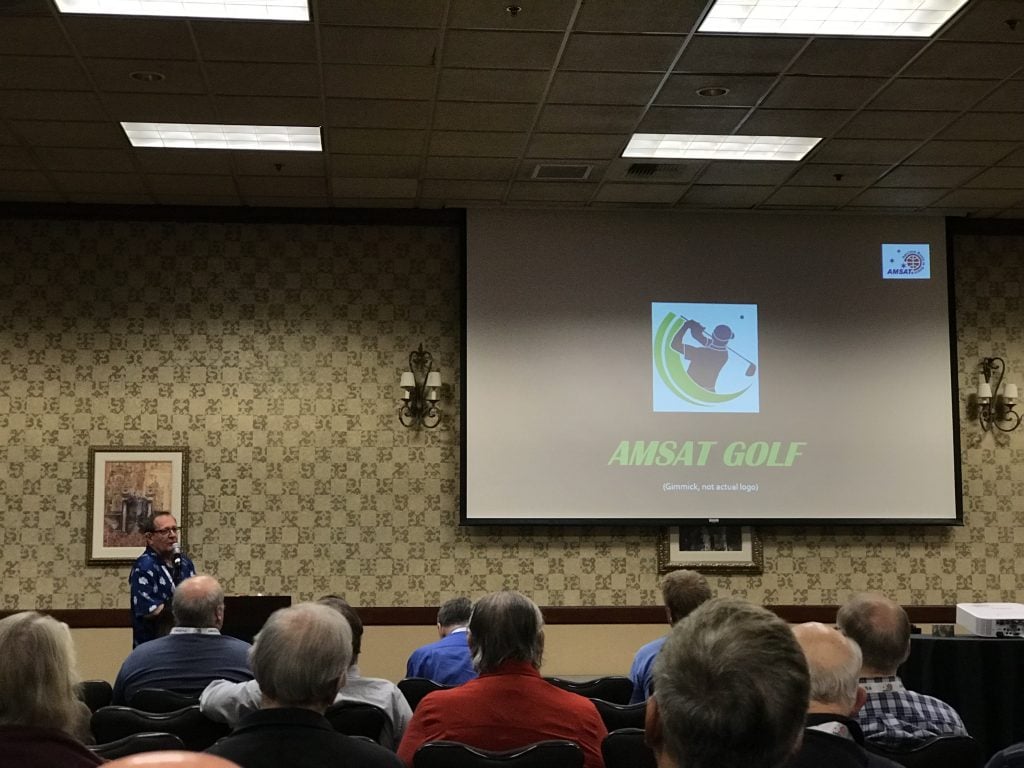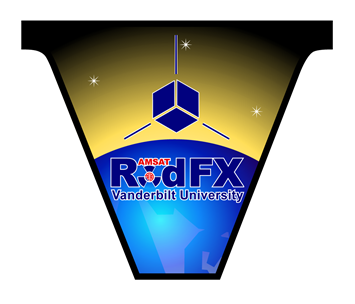Introduction
AMSAT’s next Fox-1 satellite, Fox-1D, is scheduled for launch on January 12, 2018 from Satish Dhawan Space Centre in Sriharikota, India. Fox-1D will launch as part of the PSLV-C40 mission on board a Polar Satellite Launch Vehicle with a Cartosat-2 series imaging satellite for the Indian government and 29 other payloads. ISRO’s mission brochure can be found at https://www.isro.gov.in/pslv-c40-cartosat-2-series-satellite-mission/pslv-c40-cartosat-2-series-satellite-brochure.
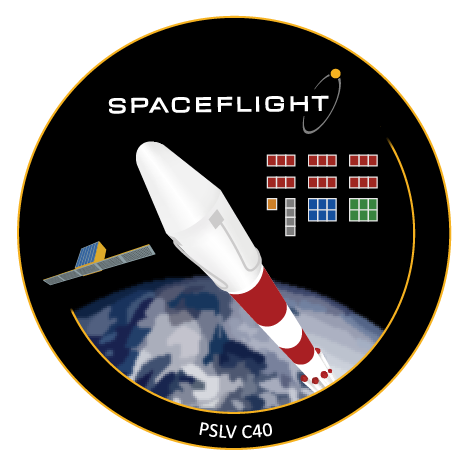
In addition to the Fox-1 U/v FM transponder, Fox-1D carries several university experiments, including a MEMS gyro from Pennsylvania State University – Erie, a camera from Virginia Tech, and the University of Iowa’s HERCI (High Energy Radiation CubeSat Instrument) radiation mapping experiment. Fox-1D also carries the AMSAT L-Band Downshifter experiment which allows the utilization of a 1.2 GHz uplink for the FM transponder. Telemetry, experiment data, and pictures from the Virginia Tech camera can be decoded using the FoxTelem software (https://www.amsat.org/foxtelem-software-for-windows-mac-linux/).
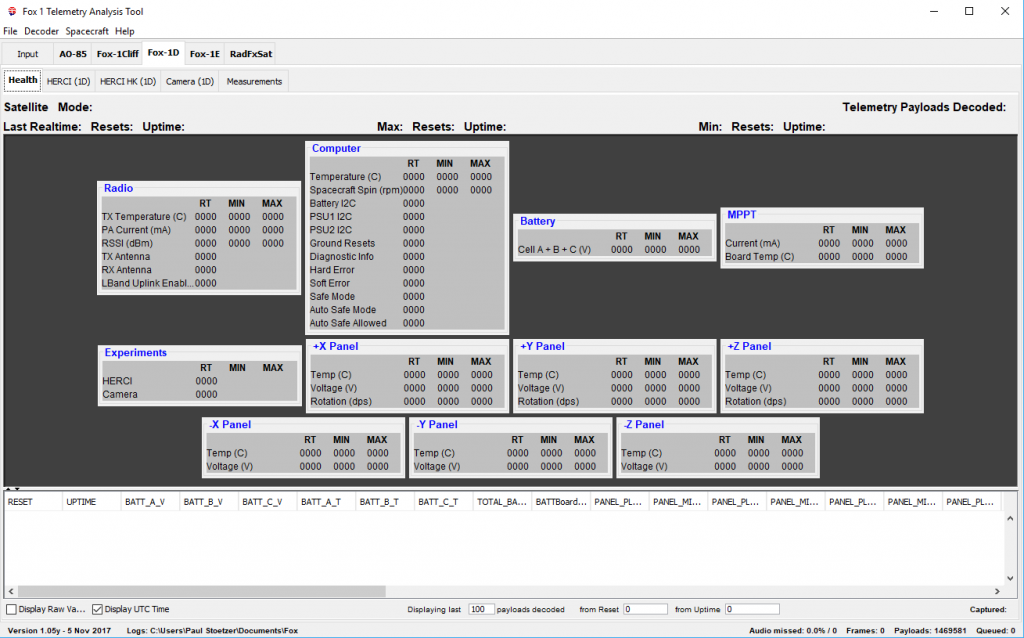
Launch and Early Orbit Phase (LEOP)
Fox-1D is scheduled for launch into a sun-synchronous orbit at 03:59 UTC on January 12, 2018 (10:59pm EST on Thursday, January 11th) from Satish Dhawan Space Centre in Sriharikota, India. Estimated pre-launch Keplerian elements are:
Fox-1D
1 99934U 1801D 18012.18138657 .00000000 00000-0 00000-0 0 19
2 99934 97.5671 73.8300 0006273 277.3678 311.7572 15.21737581 17
Updated pre-launch and post-launch Keplerian elements will be distributed when available on the AMSAT-BB and AMSAT website. Please refer to your tracking software documentation for instructions on manually entering Keplerian elements. As there are 31 satellites on this launch, determining the final object number and adding the satellite to the AMSAT Keplerian elements distribution may take several days. Fox-1D’s deployment should occur at at 04:21:12 UTC. “First Veronica,” the first transmission from Fox-1D, is expected at approximately 05:22:12 UTC.
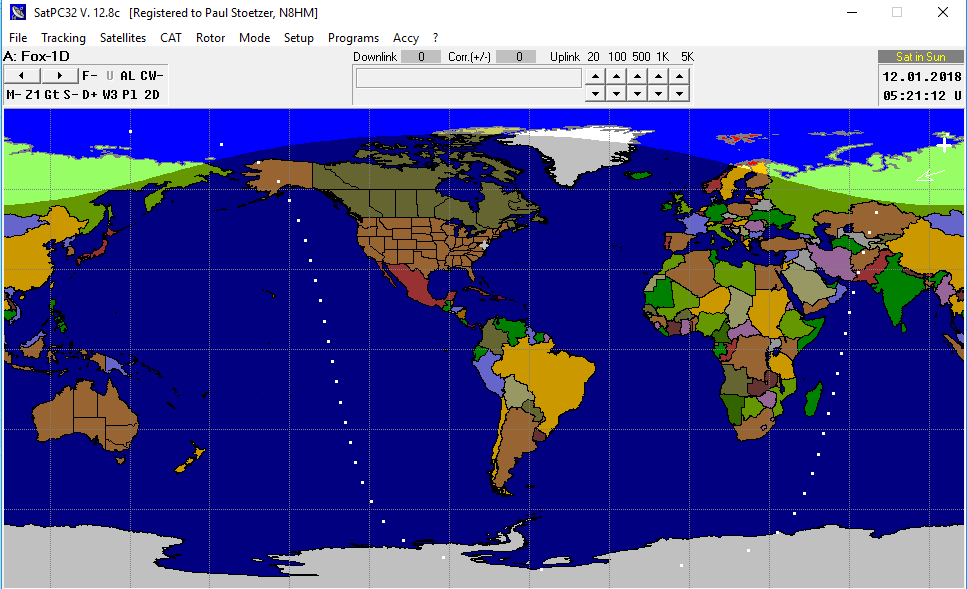
Participation in telemetry collection by as many stations in as many parts of the world as possible is essential as AMSAT Engineering looks for successful startup and indications of the general health and function of the satellite as it begins to acclimate to space. AMSAT will send a commemorative 3D printed QSL card to the first station capturing telemetry from Fox-1D.
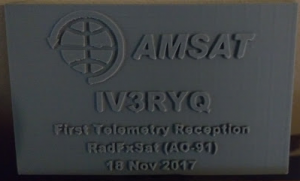
If you are capturing telemetry with FoxTelem please be sure that “Upload to Server” is checked in your settings, and that your “Ground Station Params” are filled in as well. In addition, be sure that the SOURCE button in the INPUT tab is set to AUTO . You can help AMSAT and everyone waiting to get on the air with Fox-1D tremendously by capturing Fox-1D telemetry.
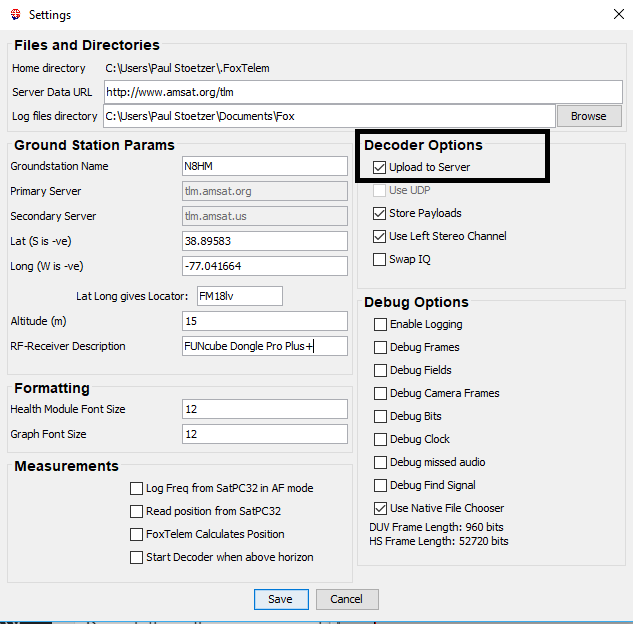

About 60 minutes after deployment, the satellite will start up in Beacon Mode. In this initial mode, the transmitter is limited to 10 seconds on time and then will be off for two minutes. For those of you capturing telemetry, that means that you will only see Current frames and no High or Low frames. The High and Low frames are truncated as it takes just over the 10 second limit to send two frames. Veronica will announce “Fox-1 Delta, Safe Mode” in Beacon Mode.
If AMSAT Engineering is seeing nominal values from the telemetry you gather, the satellite will be commanded from Beacon Mode to Safe Mode on the first good pass over the United States. In Safe Mode, the satellite transmits a full two frames of telemetry (one Current frame followed by, and alternating each ID cycle, a High or a Low frame).
The on-orbit checkout procedure for Fox-1D is similar to the procedure for AO-91. However, the various experiments on board Fox-1D, including the HERCI, Virginia Tech camera, and L-Band Downshifter will require more extensive testing than the experiments on board AO-91 and could take up to two weeks but could be less if users cooperate. It is very important, and good amateur operating practice, to refrain from using the transponder uplink so the on-orbit tests can be performed, including when the satellite is switched into Transponder Mode for testing.
AMSAT will make it broadly known when the tests are complete and the transponder is available for all to use. If you hear someone on the transponder, please do not assume that it is open for general use – check AMSAT’s website, Facebook, and Twitter before transmitting to be sure you do not interfere with testing.
AMSAT asks all satellite operators to contribute just a little bit of your time by gathering telemetry, not using the transponder uplink, to help complete the progress of getting Fox-1D operating for the amateur radio community.
Lots of hams put thousands of volunteer hours of their time into making Fox-1D happen. Just like any ham radio project you might undertake, AMSAT builds satellites. AMSAT volunteers do it because they like to, and when they are done, AMSAT freely shares their project with hams everywhere as is the spirit of amateur radio.
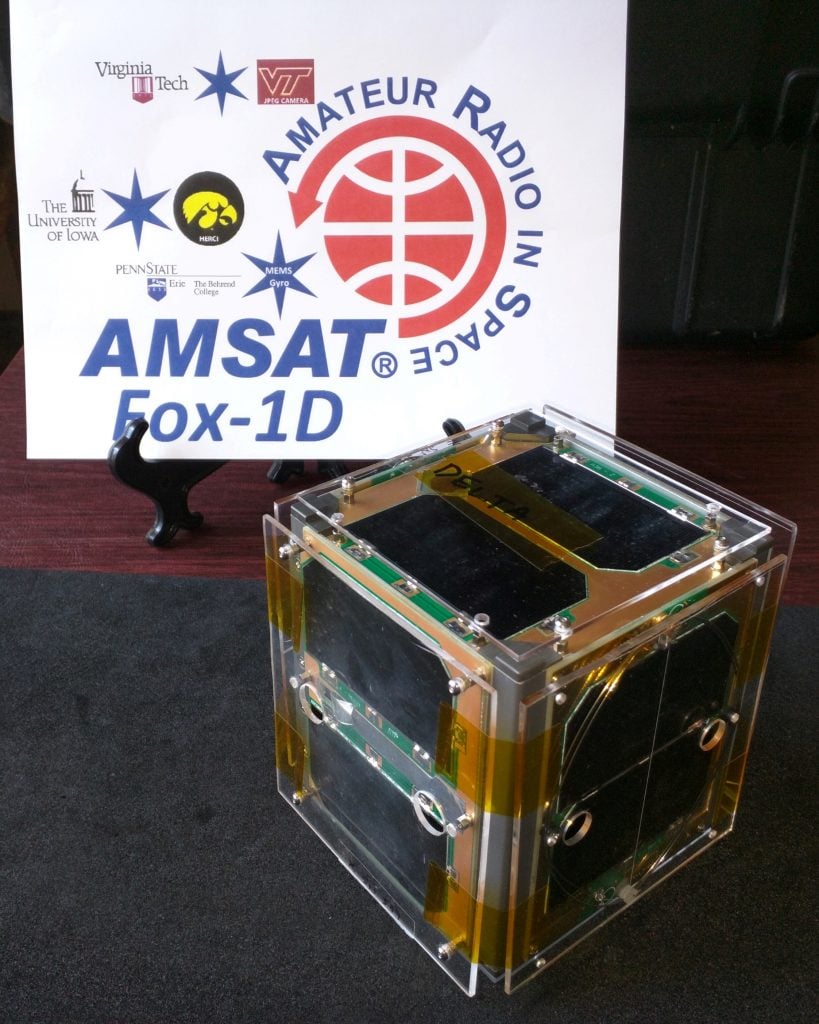
Operating Schedule Notes
While the U/v FM transponders on AO-85 and AO-91 are generally available for amateur use continuously, Fox-1D carries several experimental payloads, including the Virginia Tech camera and the University of Iowa’s HERCI that require the use of the Fox-1 high speed telemetry downlink. The FM transponder is not available in this mode. In addition, times will be scheduled for the use of the L-band Downshifter. The 435 MHz uplink is not available in this mode. Following commissioning, AMSAT Operations will periodically publish an operating schedule via the AMSAT News Service, AMSAT-BB, and AMSAT social media accounts.
L-Band Downshifter
When enabled, the L-Band Downshifter will utilize an uplink of 1267.350 MHz. This device converts signals received at 1267.350 MHz and injects them into the satellite’s 435 MHz receiver. Since the 435 MHz uplink antenna is used to receive the 1267 MHz signals and may present a mismatch at that frequency, pre-launch estimates suggest that a power level of 100 watts ERP will be required for horizon-to-horizon access in Mode L/v. AMSAT Engineering will issue further guidance after in-orbit testing. Look for future articles on the AMSAT website and in The AMSAT Journal for equipment ideas and tutorials for accessing the L-band uplink.
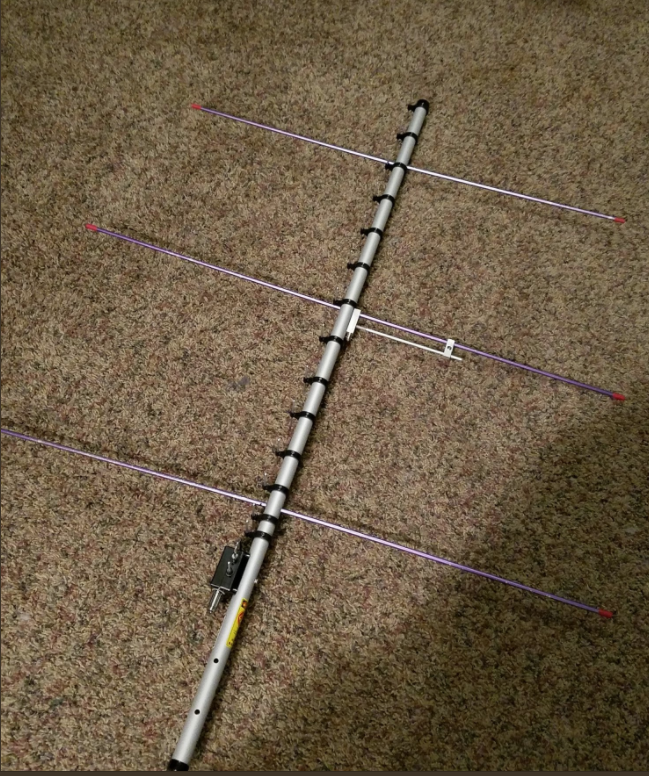
Radio Programming Charts
These charts list recommended frequencies pre-launch and are subject to adjustment after in-orbit testing. Note that the satellite’s Automatic Frequency Correction (AFC) circuit may reduce the need for precise adjustment. This should help with Doppler correction for mobile or portable operation, especially in Mode L/v. For example, many 1.2 GHz mobile transceivers are limited to minimum 10 kHz steps. Adjust your radio’s programming accordingly. Although the AFC circuit allows for some error in Doppler correction, AMSAT Operations recommends utilizing the most precise Doppler corrections allowed by your equipment.
|
Fox-1D Doppler Shift Correction (Mode U/v) |
||
|
Memory |
Your Transmit Frequency
(With 67 Hz Tone) |
Your Receive Frequency |
| Acquisition of Signal (AOS) | 435.340 MHz | 145.880 MHz |
| Approaching | 435.345 MHz | 145.880 MHz |
| Time of Closest Approach (TCA) | 435.350 MHz | 145.880 MHz |
| Departing | 435.355 MHz | 145.880 MHz |
| Loss of Signal (LOS) | 435.360 MHz | 145.880 MHz |
|
Fox-1D Doppler Shift Correction (Mode L/v) |
||
|
Memory |
Your Transmit Frequency
(With 67 Hz Tone) |
Your Receive Frequency |
| Acquisition of Signal (AOS) | 1267.320 MHz | 145.880 MHz |
| Approaching 1 | 1267.325 MHz | 145.880 MHz |
| Approaching 2 | 1267.330 MHz | 145.880 MHz |
| Approaching 3 | 1267.335 MHz | 145.880 MHz |
| Approaching 4 | 1267.340 MHz | 145.880 MHz |
| Approaching 5 | 1267.345 MHz | 145.880 MHz |
| Time of Closest Approach (TCA) | 1267.350 MHz | 145.880 MHz |
| Departing 1 | 1267.355 MHz | 145.880 MHz |
| Departing 2 | 1267.360 MHz | 145.880 MHz |
| Departing 3 | 1267.365 MHz | 145.880 MHz |
| Departing 4 | 1267.370 MHz | 145.880 MHz |
| Departing 5 | 1267.375 MHz | 145.880 MHz |
| Loss of Signal (LOS) | 1267.380 MHz | 145.880 MHz |
Special Membership Offer
As part of the preparations for the launch of Fox-1D, AMSAT is making the “Getting Started With Amateur Satellites” book available for a limited time as a download with any paid new or renewal membership purchased via the AMSAT Store. This offer is only available with purchases completed online, and for only a limited time. A perennial favorite, Getting Started is updated every year with the latest amateur satellite information, and is the premier primer of satellite operation. The 182 page book is presented in PDF format, in full color, and covers all aspects of making your first contacts on a ham radio satellite.
Please take advantage of this offer today by visiting the AMSAT store at https://www.amsat.org/shop/ and selecting any membership option. While there, check out AMSAT’s other items, including the M2 LEOpack antenna system, Arrow antennas, AMSAT shirts, and other swag. Be sure to view your cart before going to checkout. If you add a membership and then go directly to checkout, you’ll never see an option to add your free gift.
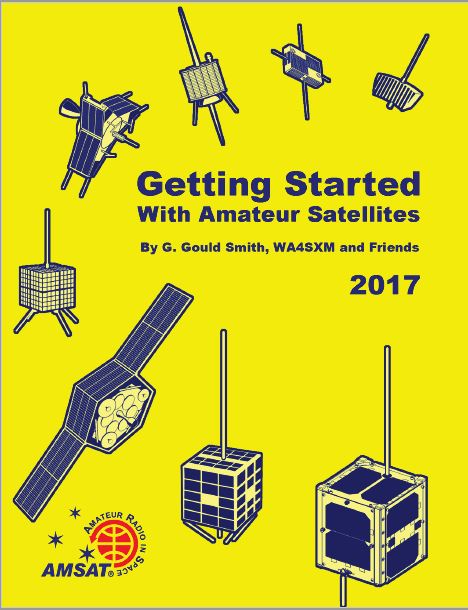
A PDF copy of this document is available at https://www.amsat.org/wordpress/wp-content/uploads/2018/01/Getting-Ready-for-Fox-1D.pdf

